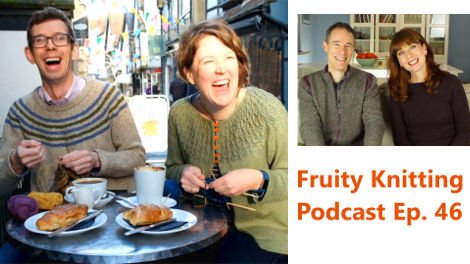We have two very different and inspiring guests for you in Episode 98. Our main feature interview is with the UK designer Ria Burns, who recently completed a Masters in Textiles and Design and has started her own knitwear brand. We also have a mini interview with the Norwegian designer Sidsel Høivik who shows us how to transform our knitted garments with embroidery and crochet.
We then take you to the beautiful historic town of Stein am Rhein in Switzerland and look at some amazing frescoes, painted on 15th century buildings. They are really extraordinary, and Andrew gives us a brief history lesson as a prelude. To round the program off we have an update on my project, Andrew has started a new project and there’s a little bit of talk about washing and caring for your handknits.
Ria Burns
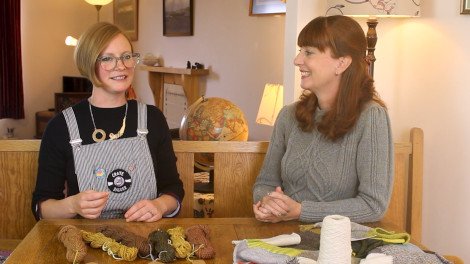
Ria’s passion is to create sustainable knitwear. She makes machine knitted garments and accessories using wool from a local eco farm, which she then hand-dyes with food waste, foraged plants and plants from her own back garden.

If you have gardening in your list of hobbies, you will particularly appreciate Ria’s knowledge about using local plants to dye yarn. Ria also enjoys teaching classes on natural dyeing. She is young, fresh and enthusiastic and we think you will enjoy meeting her.

There seems to be a real art form in natural dyeing with plants. Ria is also very conscientious about making very long lasting garments and does very stringent light fast and wash fast testing on all the different plant dyes before deeming them suitable for her designs.
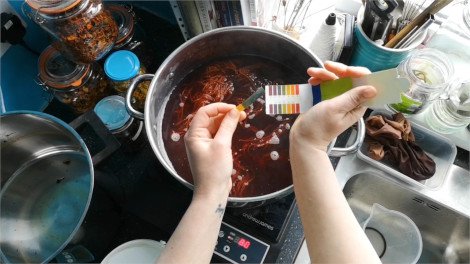
Finding Ria Burns
Sidsel Høivik

Sidsel Høivik is a very experienced designer who has worked in the industry for many years. She is known for her very ornate and beautiful knitwear. We did a full feature interview with Sidsel Høivik two years ago back in Episode 30 and it was great to catch up with her again in February during the Swiss Yarn Festival. Sidsel was giving classes on how to transform your knitted garments with embroidery and crochet, so we sat down together to have a closer look at how she does that and what techniques she uses.

I was very encouraged to see that Sidsel only uses the very basic embroidery stitches and crochet techniques which are fairly straightforward for a knitter to learn. When you do add small amounts of these other crafts to your knitted projects, the results can look very interesting and beautiful. It can also give you another level of enjoyment with your making.

Finding Sidsel Høivik
Patron Discount – Sidsel Høivik
Sidsel is kindly offering Fruity Knitting Patrons a 10% discount off everything in her online store. Sidsel sells her designs in a kit which includes the pattern, the yarn and often the extra buttons and ribbon that are part of the design. She really has stunningly beautiful designs, so you will enjoy browsing through for inspiration.
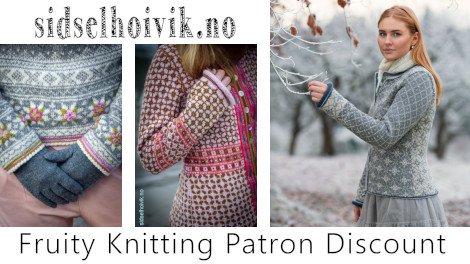
Photo Credits
Photos for Sidsel Høivik are copyright and used with permission:
- Anne Helene Gjelstad Photography
- Hillesvag Ullvarefabrikk
Stein am Rhein
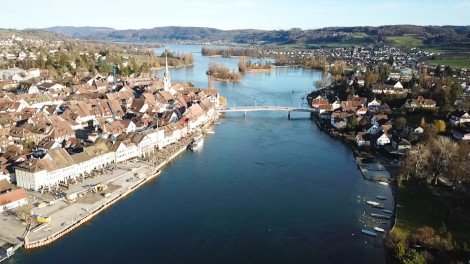
We visit the beautiful town of Stein am Rhein, which dates back to around 1000 AD. The town is famous within Switzerland because of the preservation of its architectural heritage. In the town center there’s a pedestrian area and we see buildings which go back as far as the 15th century.

As you see, many of these buildings are painted with murals of frescoes. Andrew did a bit of historical research and came up with some interesting stories.
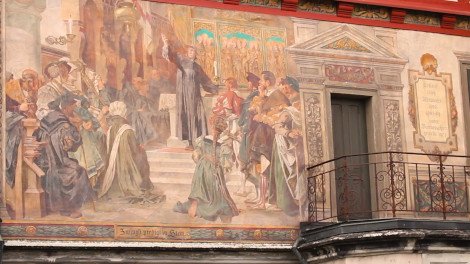
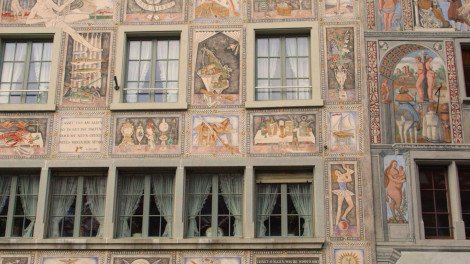
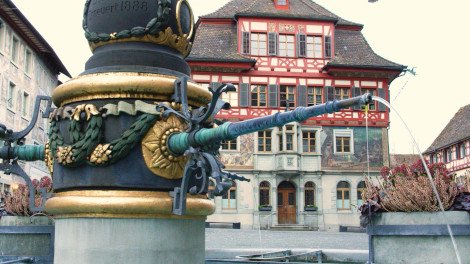
Prince Edward Island Fibre Festival
Time seems to have stood still for all of us now and it is very hard to plan for the future or to know what will be possible in the next few months. Nevertheless, we have been very excited about a special invitation that we received to go to the Prince Edward Island Fiber Festival in Canada in late September. The festival has very kindly offered to pay for our flights which has made it possible for us to go. If all goes well, we will travel there in September and cover the events of the festival for you all to enjoy. We will hopefully also interview some of the local fiber talent there.
We will be especially excited to meet those of you who will be there in person. There is a special event organised together with us and some other important guests.
To take your mind off present concerns, you might wish to daydream about the Prince Edward Island Fiber Festival. You can read up about it on the website below and as time goes by we will tell you more about what we will be doing there.
Under Construction

Andrea is working on Skye by Marie Wallin which from her North Sea Collection and the yarn is the Hampshire 4 ply from The Grey Sheep Co.

Andrew’s new project is this lovely summer top called Celestial by Martin Storey. It’s published in the Rowan magazine no. 61. The yarn he is using is the wool and cotton blend Duo from Sandnes Garn.
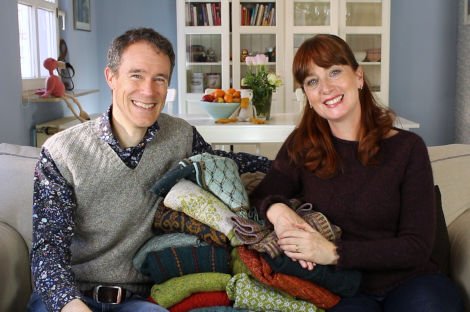
Our viewers have a wide range of knitting skills and experience. Some of them are relatively new to knitting and in particular to knitting themselves garments. One of the questions that we have received is how to wash, store and care for hand knits. Since Andrea particularly loves knitting garments and has knitted herself over 25 woolen garments, she thought she’s share with you how she cares for our garments.
We were wearing

- Andrea was wearing:
- In the Episode: Temperate by Kim Hargreaves
- With Ria Burns, Nightingale by Norah Gaughan
- With Sidsel, Mother Åse´s jacket, by Sidsel Høivik
- Andrew was wearing Whelk by Martin Storey
Music Credits
- J. S. Bach, The Well Tempered Klavier, performed by Kimiko Ishizaka, Creative Commons Attribution 3.0
- Prelude No. 3 in C-Sharp major, BWV 848
- Prelude No. 16 in G minor, BWV
- Edvard Grieg, Peer Gynt Suite No. 1, Op. 46, performed by Tbilisi Symphony Orchestra
- I. Morning Mood
- III. Anitra’s Dance



